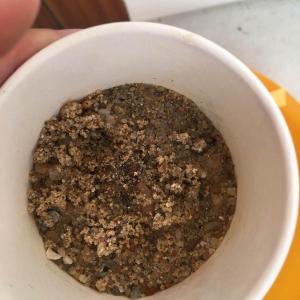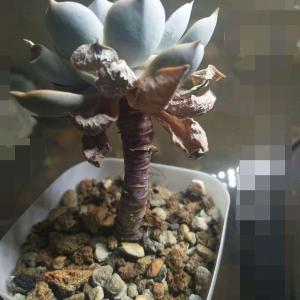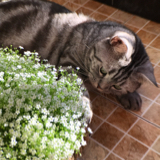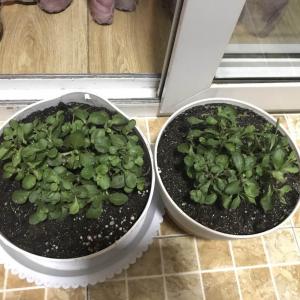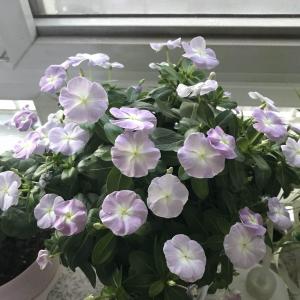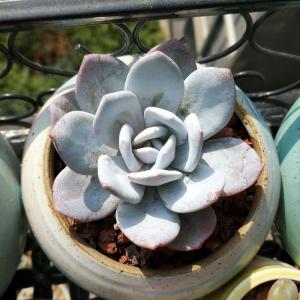文章
Miss Chen
2017年12月22日

Description: This perennial plant is unbranched or sparsely branched in the upper half, and 1-2½' tall. The pale green central stem has light longitudinal lines. The alternate compound leaves are oddly pinnate and about 2-7" long, consisting of 3-9 pale green leaflets. Each leaflet is linear or narrowly oblanceolate, about 1" long and less than ¼" across. The margins are smooth, and the underside of each leaflet has numerous translucent dots. Both the stems and leaves are hairless. There is a short cylindrical spike of white flowers at the terminus of the central stem and each of the major side stems. This spike is about 1-3" tall and ¾" across. The small flowers form a wreath around the bottom of the spike, which moves upward as the season progresses. Each flower is about ¼" across, with 5 petals and 5 white stamens. The flowers often have a pleasant fragrance. The blooming occurs during early to mid-summer and lasts about a month. The seeds fall a short distance from the mother plant when the wind shakes the cylindrical spikes. The root system consists of a central taproot that can extend 5' into the ground.
Cultivation: The preference is full sun and mesic to dry conditions. The soil can contain significant amounts of loam, clay, sand, or gravel. This plant is slow to develop, but otherwise easy. Foliar disease isn't troublesome. Drought resistance is very good.
Range & Habitat: The native White Prairie Clover occurs occasionally in scattered counties of Illinois, but it is rare or absent in the SE section of the state (see Distribution Map). Habitats include mesic to dry black soil prairies, sand prairies, savannas, openings in upland forests, and limestone glades. It is rarely observed in highly disturbed areas. Recovery from occasional wildfires is good.
Faunal Associations: The nectar and pollen of the flowers attract bumblebees, Halictid bees (including green metallic bees), plasterer bees (Colletes spp.), Sphecid wasps, Tiphiid wasps, Syrphid flies, thick-headed flies (Conopidae), and small butterflies. Two oligolectic plasterer bees, Colletes robertsonii and Colletes wilmattae, visit the flowers of White Prairie Clover (Robertson, 1929; Krombein et al., 1979). Other insects feed on the seeds, foliage, and other parts of this plant. They include such species as the larvae of two butterflies, Colias cesonia (Dogface Sulphur) and Hemiargus isola (Reakirt's Blue), the seed-eating larvae of two weevils, Apion amaurum and Apion capitone, and Melanoplus keeleri luridus (Keeler's Grasshopper); see Opler & Krizek (1984), Sauer (2005), and Campbell et al. (1974). This plant is palatable and high in protein, therefore it is readily consumed by mammalian herbivores of all kinds, including rabbits, groundhogs, deer, and livestock. This can cause difficulties in establishing this plant in some areas. It is possible that small rodents may carry the seeds to their dens. Because of their high mortality rate, some of the seeds will remain uneaten, and thus are dispersed by these rodents.

Photographic Location: Photographs were taken at the Lincoln Book Bindery in Urbana, Illinois.
Comments: White Prairie Clover often occurs in the same habitats as Dalea purpurea (Purple Prairie Clover) – the two are often seen together, although the former begins blooming about 2 weeks earlier than the latter. However, White Prairie Clover is the less common of the two plants. The most obvious difference between them is the coloration of their flowers. In addition, White Prairie Clover tends to have more elongated flowering spikes with hair-like bracts, and its foliage is longer, sparser, with a lighter shade of green. Prior to blooming, it blends into the background of grasses and other forbs rather well, and is easy to overlook.
Cultivation: The preference is full sun and mesic to dry conditions. The soil can contain significant amounts of loam, clay, sand, or gravel. This plant is slow to develop, but otherwise easy. Foliar disease isn't troublesome. Drought resistance is very good.
Range & Habitat: The native White Prairie Clover occurs occasionally in scattered counties of Illinois, but it is rare or absent in the SE section of the state (see Distribution Map). Habitats include mesic to dry black soil prairies, sand prairies, savannas, openings in upland forests, and limestone glades. It is rarely observed in highly disturbed areas. Recovery from occasional wildfires is good.
Faunal Associations: The nectar and pollen of the flowers attract bumblebees, Halictid bees (including green metallic bees), plasterer bees (Colletes spp.), Sphecid wasps, Tiphiid wasps, Syrphid flies, thick-headed flies (Conopidae), and small butterflies. Two oligolectic plasterer bees, Colletes robertsonii and Colletes wilmattae, visit the flowers of White Prairie Clover (Robertson, 1929; Krombein et al., 1979). Other insects feed on the seeds, foliage, and other parts of this plant. They include such species as the larvae of two butterflies, Colias cesonia (Dogface Sulphur) and Hemiargus isola (Reakirt's Blue), the seed-eating larvae of two weevils, Apion amaurum and Apion capitone, and Melanoplus keeleri luridus (Keeler's Grasshopper); see Opler & Krizek (1984), Sauer (2005), and Campbell et al. (1974). This plant is palatable and high in protein, therefore it is readily consumed by mammalian herbivores of all kinds, including rabbits, groundhogs, deer, and livestock. This can cause difficulties in establishing this plant in some areas. It is possible that small rodents may carry the seeds to their dens. Because of their high mortality rate, some of the seeds will remain uneaten, and thus are dispersed by these rodents.

Photographic Location: Photographs were taken at the Lincoln Book Bindery in Urbana, Illinois.
Comments: White Prairie Clover often occurs in the same habitats as Dalea purpurea (Purple Prairie Clover) – the two are often seen together, although the former begins blooming about 2 weeks earlier than the latter. However, White Prairie Clover is the less common of the two plants. The most obvious difference between them is the coloration of their flowers. In addition, White Prairie Clover tends to have more elongated flowering spikes with hair-like bracts, and its foliage is longer, sparser, with a lighter shade of green. Prior to blooming, it blends into the background of grasses and other forbs rather well, and is easy to overlook.
0
0
文章
Miss Chen
2017年12月19日


吸毒草,株高50厘米,茎叶具有肥皂香味,轮伞形花序,唇形淡粉紫色花,花期7-8月。耐热耐寒,较耐干旱耐水涝,也耐修剪。立冬前修剪一次,可安全越冬。
吸毒草是一种十分耐寒的植物,即使在零度以下的低温,依然绿油油的一片。它很受蜜蜂喜欢,浅绿色的叶子十分漂亮,揉一揉会闻到一股柠檬的香味。如柠檬般清香,可去除头痛、腹痛、牙痛。并有助于治疗支气管炎以及消化系统疾病。
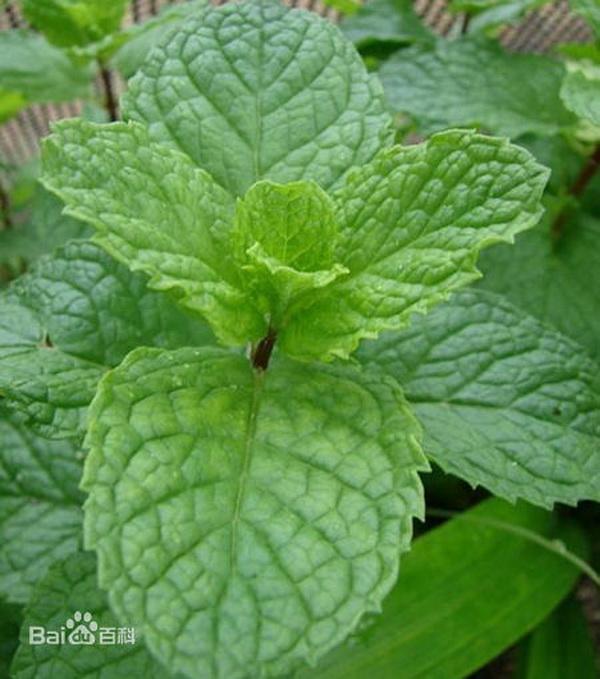
吸毒草可以放在卧室里吗
与许多植物一样,吸毒草同样也不适合放在卧室里哦。吸毒草具有较强大的净化能力,可以吸收空气中的有害气体,比如甲醛、氨气、异味等,美化周围的环境,因而很多花友往往喜欢将它放在卧室里养护,然而这其实是错误的做法,吸毒草是不适合长期摆放在卧室里的。
吸毒草不可以放在卧室里的原因
虽然吸毒草具有较好的吸附性能,但是同大多数植物的生长特性一样,在夜晚吸毒草会进行呼吸作用,释放出二氧化碳等气体,与人争夺氧气,不利于夜间休息和人体健康。为了避免造成这个问题,同时又能达到净化卧室空气的目的,可以在白天将吸毒草放置于卧室光照良好的地方,等到了晚上记得要将它搬出去就可以了。
2
0
文章
八公
2017年12月18日

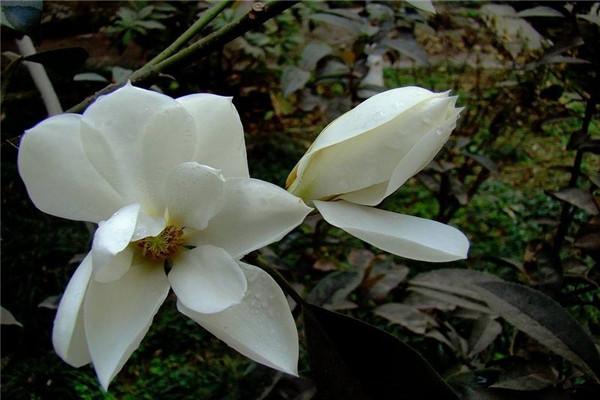
根腐
这种病叶总伴随着茎腐和炭疽病出现,多半是水肥使用不当引起的,不要以为水肥有利生长就一味浇灌,跟多植物都是被“浇死”的。这病发生的时间段比较长,在4月下到7月上之间都可能。
一旦发现就要立刻调整目前的水肥方案,及时拔掉已经生病的植株病销毁,然后再用药剂喷施其他未受害的植株。
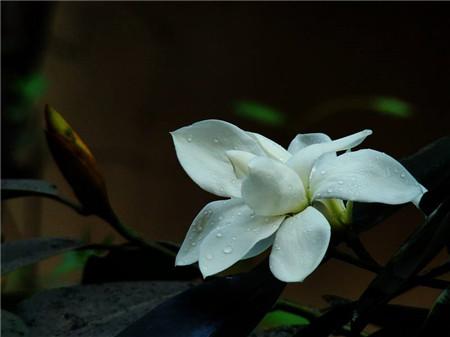
蛴螬
这种虫往往会和地老虎一起出现,4、5月份是比较“猖狂”的时间。它们经常是在地下活动的,如果处理的不好,一定会让整株都遭遇这种虫子,最后枯死。它们其实就是金龟子的幼虫,基本上是白色的,但是头部是褐色的。会在白天的时候藏在土里,晚上八九点的时候才出来做害。温度在13-15℃的时候是最喜欢出来的。
遇到这种虫,可能是因为雨天的时候没能做好排水,一旦出现了这样的虫,直接用一定剂量的敌百虫防治,可以不直接喷施,而在周边扎洞浇灌,这样做会更有效一点。

介壳虫
这小虫也是比较常见的,该虫基本上会在5-6月的时候出没,防治起来是比较困难的,比较严重的时候会重叠在一块,叶片和果实都不放过,还能导致整个枝甚至全株死亡。
平时一定要注意养护和管理,秋天的时候要及时刷掉枝干上的幼虫,如果整株已经死掉,为避免其继续传播,还要销毁死株,及时修剪通风。
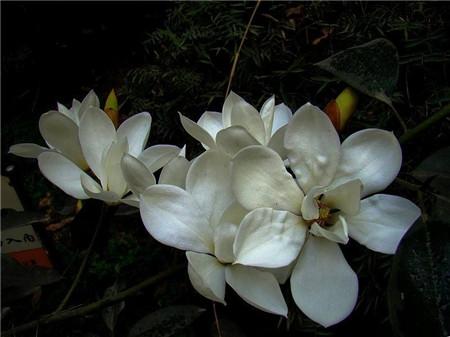
0
0
文章
八公
2017年12月18日


1.白粉病
白粉病是月季比较经常生的一种病害,它的危害非常大,大多数是在5月下旬的时候就会开始初次的进行侵染了,等到6、7月的时候就会开始不断地蔓延开来,当叶片受到伤害之后,表面上就会生上一层白色的粉末状物体,嫩梢上面也没有逃脱掉。严重的时候还会让叶片开始慢慢的脱落甚至死掉都是有可能的。那这时候我们就需要进行及时的针对性治疗,在春季生长的时候我们就可以交替的使用一些药物对它进行适当喷洒,喷过药物之后它的白粉位置就会变成暗灰色的,慢慢开始干缩并且消失。在秋雨时间的时候正是它突发的高峰期,这期间一定要多次进行喷洒药物,就可以把伤害降低最低,直接彻底防治。
2.黑斑病
这个也是香水月季最经常被感染的一种病症。它的残体一般还会跟着香水月季一起过冬,凭借着雨水或者浇水的时候就会飞溅传播起来,昆虫也是会传播的。一般引发病症最合适的温度是在26度左右,还是雨量比较多的季节,尤其是新栽种或者长势比较弱的植株更容易受到侵害,那我们就应该及时的清扫落叶,把一些生病叶子给及时摘掉,冬天的时候还要对那些生病的植株进行大幅度修剪,浇水也要注意,不能喷浇。
3.蚜虫
蚜虫也是直接的对它产生了很大的危害,它们会吸取植株嫩芽上面的汁液营养,这样就直接让那个花苞长得非常畸形,营养也跟不上去,还间接的容易让它感染其他的疾病。那我们就要及时的喷洒一些药物在它的植株上面,基本上是7天一次,喷上个2到3次就可以了。

1
1
文章
Miss Chen
2017年12月13日

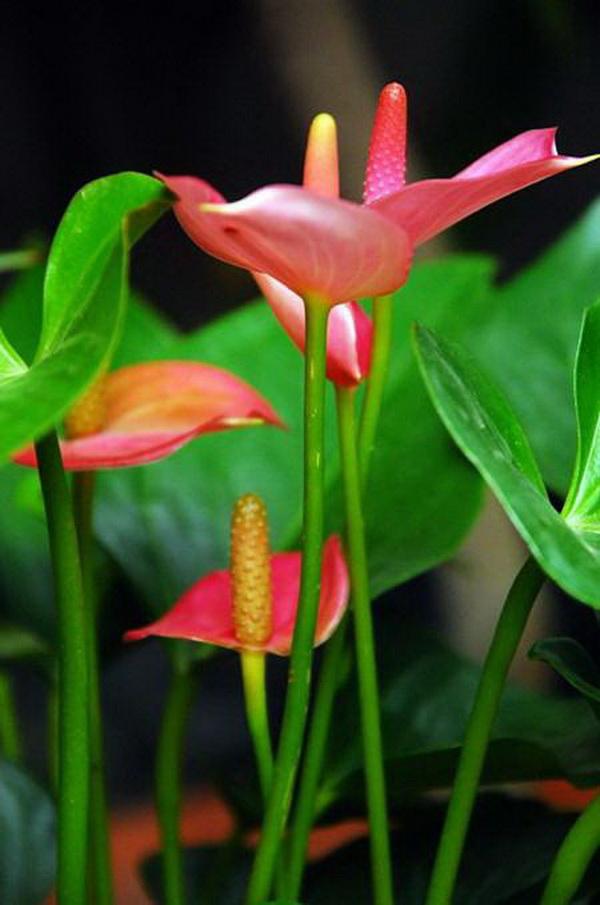
红掌,天南星科多年生常绿草本植物。茎节短;叶自基部生出,绿色,革质,全缘,长圆状心形或卵心形。叶柄细长,佛焰苞平出,卵心形,革质并有蜡质光泽,橙红色或猩红色;肉穗花序长5-7厘米,黄色,可常年开花不断。
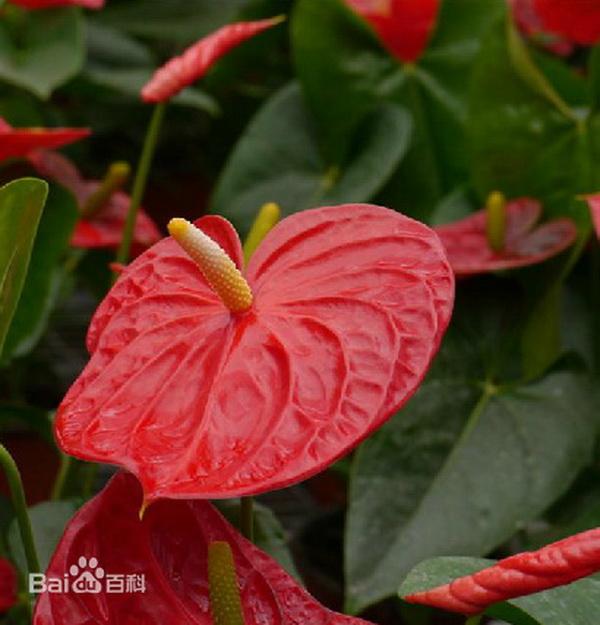
红掌是否有毒
红掌的花有轻微的毒性,只要不误食就不会有事,另外,红掌的毒性主要是存在于它的汁液里面,所以,在修剪红掌的时候一定要带上手套,并且在修剪之后洗手。
红掌误食或者是误触之后怎么办
如果误食红掌的话,可是非常难受的一件事情呢,嘴里又烧又痛,然后会肿胀起泡。嗓音变得嘶哑难听,吞咽也变得越发困难起来。多数症状会随着时间过去而减轻直到消失,如果想减轻痛苦,小编建议大家选择清凉的液体、止痛的药丸或者甘草类和亚麻仁的食物来进行吞服。
如果皮肤直接接触红掌的汁液,皮肤上会有烧灼感,慢慢变得红肿,不过不用担心,慢慢会好的,日常护理中只要不接触它的汁液就没事。
红掌的作用
红掌能够吸收空气中对人体有害的苯、三氯乙烯,净化空气,再加上红掌的花期较长,盆栽的单花期更是能够达到4~6个月之久!是非常适合的室内观赏花卉。
并且红掌也是非常合适的搭配室内陈设的一种植物,很容易制造出一种极佳的家居风格。
红掌适合摆放在卧室吗
如果是纯粹的观赏是可以放在卧室内的,和卧室内的家具相互映衬搭配,也可以为卧室添上一抹绿色,但是实际上,小编是不建议大家将植物摆放在卧室的,首先的一点,就是植物会在晚上的时候吸收氧气,排出二氧化碳。
当然,如果花友不嫌弃麻烦的话,可以在晚上的时候将花卉从卧室中拿出来,白天的时候再搬回去。
1
0
文章
Miss Chen
2017年12月03日


孔雀草菊科、万寿菊属一年生草本植物。茎直立,分枝斜展。叶羽状分裂,头状花序单生,管状花花冠黄色,瘦果线形,花期7-9月。
原产墨西哥。分布于四川、贵州、云南等地,生于海拔 750-1600m的山坡草地、林中,或庭园栽培。具有药用价值。孔雀草的全草可入药,夏、秋季采收,鲜用或晒干。性味苦,平。有清热利湿,止咳之功效。用于咳嗽,痢疾,顿咳,牙痛,风火眼痛;外用于痄腮,乳痛。
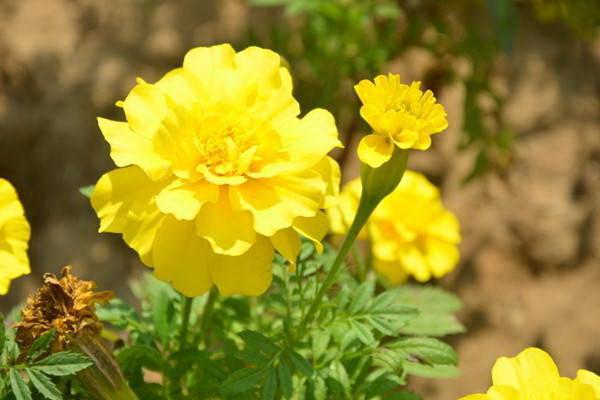
孔雀草的园林观赏价值
孔雀草花色艳丽,颜色繁多,有黄色、橘色、红色等多种颜色,还有重瓣等多种样式。单层的孔雀草清秀娟丽,重瓣的孔雀草更显大气美丽。
因为它的花朵好看,因此常被用作花坛装饰花卉,草坪上也常见到孔雀草的身影。可能许多人都不知道它叫做什么,但是在公园中、道路旁你一定见过它的模样!
另外在插花、花束中孔雀草也是常用切花种类之一。
孔雀草的药用价值
在导读中小编已经说过孔雀草可以入药,现在自然要来讲一下它的药用价值啦。
孔雀草的花和叶子都可以入药,具有清热解毒、化痰、补血的功效。对于治疗感冒、百日咳、气管炎等常见的病症都有着较为显著的作用。孔雀草野生环境中适宜在海拔较高的山地中,在俄罗斯高加索山区的居民经常食用孔雀草,据说能够起到益寿延年的效果。
孔雀草的花语
孔雀草的花语是爽朗的阳光。它还是每年的八月二十一日出生的人的生日专属花。它的花朵开放迎着太阳初升,花谢伴着夕阳西下,因此曾经一度被叫做“太阳花”。
0
1







